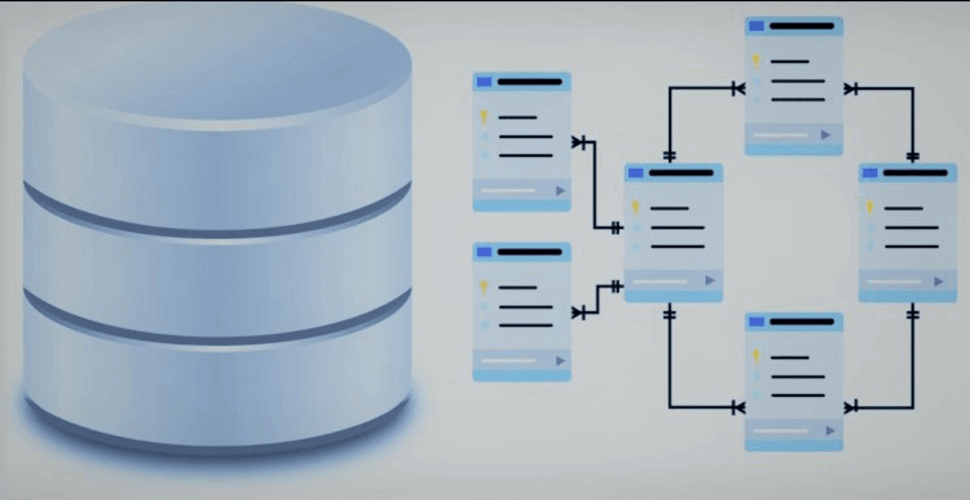How to deploy Observability Stack using docker-compose behind Caddy v2.6.4
 Rajasekhar Gundala
Rajasekhar Gundala- 30 Jul, 2023
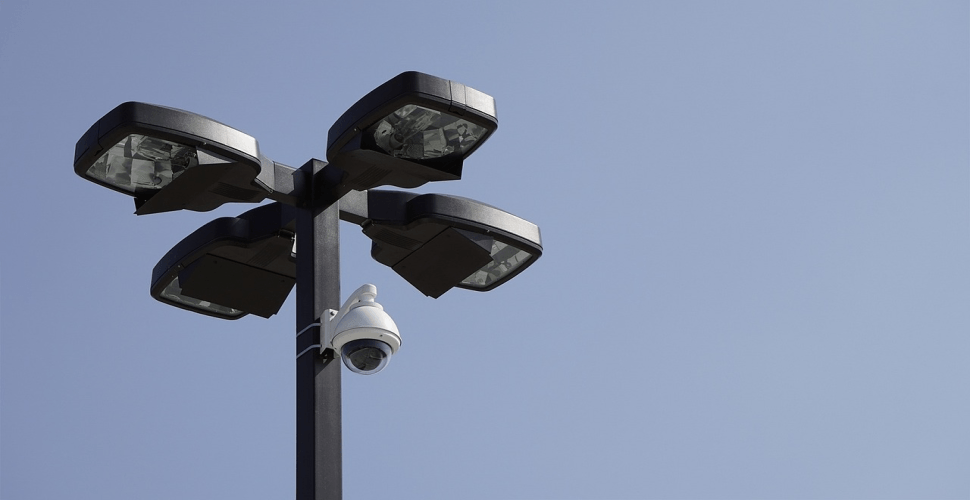
Find or Identify operational issues or security breaches, before they become issues that impact customers or users.
Today I am going to deploy Observability Stack (Quickwit, Jaeger, OpenTelemetry, Loki, Grafana and Prometheus). It is very import to monitor the application logs, metrics and traces for smooth functioning.
This observability stack helps us to find the errors and fix them before the client catches them. in other words this stack is called as distributed tracing.
Distributed tracing is a method of tracking or identifying how the requests propagate from the front end (in our case Caddy Reverse Proxy) to backend services or databases.
Also distributed tracing or observability enables developers or devops to see how an individual request is handled by analyzing the gathered logs or by looking into the traces for their external id’s.
Monitor and troubleshoot requests in large distributed systems
Let’s start with actual deployment…
Prerequisites
We will be using the below open-source tools to build our Observability Stack or Distributed Tracing Application using Docker-Compose.
Ubuntu Server (any Linux flavor).
Docker and Docker-compose Installed on the server.
Caddy as reverse proxy to expose micro-services to external.
Quickwit, Opentelemetry, Jaeger, Loki, Grafana and Prometheus
If you want to learn more about each component in the Observability Stack, please find the below links.
Introduction
Observability is the ability to collect data about program’s execution, internal states of applications and the communication among individual components in a distributed environment. To improve observability, devops or systems engineers use wide range of logging and tracing techniques to gather telemetry data, tools to analyze and use it to improve performance.
Here I am using Quickwit as a storage backend for Jaeger, OpenTelemetry to collect the data (logs, metrics and traces) from docker containers (micro-services), Loki to collect logs from the docker containers using Flog, Grafana to create dashboards and Prometheus to monitor.
Why Observability is Important
As I mentioned earlier Observability or Distributed Tracing allows us to find or identify potential problems, such as operational issues or security breaches, before they become issues that impact customers or users.
Observability helps dev teams to understand how their systems or applications behave in production environment.
Prepare Environment
Most of the time I use /opt directory to place the configuration files like docker-compose.yml, prometheus.yml, otelconfig.yaml and data folders to save containers data for persistency.
Use the below commands to create the folder.
cd /optsudo mkdir -p caddycd caddysudo touch docker-compose.ymlObservability Stack Docker Compose
Open docker-compose.yml created earlier with nano editor using sudo nano docker-compose.yml
Copy and paste the below code in docker-compose.yml
Here is the docker compose file for Observability Stack
version: "3.7"
services:
quickwit:
image: quickwit/quickwit
command: run
container_name: quickwit
restart: unless-stopped
volumes:
- ./quickwit-data:/quickwit/qwdata
environment:
- QW_ENABLE_OPENTELEMETRY_OTLP_EXPORTER=true
- OTEL_EXPORTER_OTLP_ENDPOINT=http://quickwit:7281
- QW_ENABLE_OTLP_ENDPOINT=true
- QW_ENABLE_JAEGER_ENDPOINT=true
- QW_DISABLE_TELEMETRY=1
networks:
- inet
depends_on:
caddy:
condition: service_started
jaeger:
image: jaegertracing/jaeger-query:latest
container_name: jaeger
restart: unless-stopped
environment:
- SPAN_STORAGE_TYPE=grpc
- GRPC_STORAGE_SERVER=quickwit:7281
- COLLECTOR_ZIPKIN_HOST_PORT=:9411
- COLLECTOR_OTLP_ENABLED=true
- METRICS_STORAGE_TYPE=prometheus
- PROMETHEUS_SERVER_URL=htts://prometheus:9090
- PROMETHEUS_QUERY_SUPPORT_SPANMETRICS_CONNECTOR=true
networks:
- inet
depends_on:
caddy:
condition: service_started
otelcol:
image: otel/opentelemetry-collector-contrib:latest
container_name: otelcol
restart: unless-stopped
deploy:
resources:
limits:
memory: 125M
command: [--config=/etc/otelcol-config.yaml]
volumes:
- ./otelconfig.yaml:/etc/otelcol-config.yaml
networks:
- inet
depends_on:
caddy:
condition: service_started
loki:
image: grafana/loki:latest
container_name: loki
restart: unless-stopped
networks:
- inet
depends_on:
caddy:
condition: service_started
flog:
image: mingrammer/flog
container_name: flog
restart: unless-stopped
command: -f json -d 1s -l
networks:
- inet
depends_on:
caddy:
condition: service_started
promtail:
image: grafana/promtail:2.8.0
container_name: promtail
restart: unless-stopped
volumes:
- ./promtail-local-config.yaml:/etc/promtail/config.yaml:ro
command: -config.file=/etc/promtail/config.yaml
networks:
- inet
depends_on:
caddy:
condition: service_started
grafana:
image: grafana/grafana-oss:latest
container_name: grafana
restart: unless-stopped
volumes:
- ./grafana-data:/var/lib/grafana
environment:
- GF_SECURITY_ADMIN_USER=username
- GF_SECURITY_ADMIN_PASSWORD=password
- GF_SECURITY_ADMIN_EMAIL=user@example.com
- GF_SECURITY_DISABLE_GRAVATAR=true
- GF_SECURITY_DISABLE_BRUTE_FORCE_LOGIN_PROTECTION=true
- GF_SECURITY_COOKIE_SECURE=TRUE
- GF_SERVER_ENABLE_GZIP=true
- GF_SERVER_ROOT_URL=https://grafana.example.com
- GF_ANALYTICS_REPORTING_ENABLED=false
- GF_USERS_ALLOW_SIGN_UP=false
- GF_USERS_DEFAULT_THEME=light
- GF_EXPLORE_ENABLED=true
- GF_ALERTING_ENABLED=false
- GF_UNIFIED_ALERTING_ENABLED=true
- GF_FEATURE_TOGGLES_ENABLE=traceToMetrics,publicDashboards,tempoApmTable
entrypoint:
- sh
- -euc
- |
mkdir -p /etc/grafana/provisioning/datasources
cat <<EOF > /etc/grafana/provisioning/datasources/ds.yaml
apiVersion: 1
datasources:
- name: Loki
type: loki
access: proxy
url: http://loki:3100
EOF
/run.sh
networks:
- inet
depends_on:
loki:
condition: service_started
prometheus:
image: prom/prometheus:latest
container_name: prometheus
restart: unless-stopped
command:
- --config.file=/etc/prometheus/prometheus.yml
- --web.enable-remote-write-receiver
- --enable-feature=exemplar-storage
volumes:
- ./prometheus.yml:/etc/prometheus/prometheus.yml
networks:
- inet
depends_on:
caddy:
condition: service_started
caddy:
image: tuneit/caddy
restart: unless-stopped
container_name: caddy
ports:
- target: 80
published: 80
mode: host
- target: 443
published: 443
mode: host
- target: 443
published: 443
mode: host
protocol: udp
- target: 2019
published: 2019
mode: host
networks:
- caddy
- inet
volumes:
- ./Caddyfile:/etc/caddy/Caddyfile
- ./caddydata:/data
- ./caddyconfig:/config
- ./caddylogs:/var/log/caddy
environment:
- OTEL_SERVICE_NAME=caddy
- OTEL_EXPORTER_OTLP_TRACES_ENDPOINT=http://quickwit:7281
volumes:
caddydata:
caddyconfig:
caddylogs:
grafana-data:
quickwit-data:
networks:
caddy:
external: true
inet:
driver: bridgeHere I used a custom Caddy docker container with plugins, like Cloudflare DNS, Caddy Auth Portal etc…
Please find the custom caddy docker image below.
Here you can observe that I used one docker-compose file to deploy all the micro-services. One thing we can observe that I used depends_on to control start and shutdown dependencies between services.
I wanted to start the Caddy service first because it’s acts as a reverse proxy in my environment.
Caddyfile – Observability Stack
The Caddyfile is a convenient Caddy configuration format for humans.
Caddyfile is easy to write, easy to understand, and expressive enough for most use cases.
Please find Production-ready Caddyfile for the `Observability Stack`
Learn more about Caddyfile here to get familiar with it.
{
email user@example.com
default_sni anything
cert_issuer acme
# Production acme directory
acme_ca https://acme-v02.api.letsencrypt.org/directory
servers {
metrics
protocols h1 h2c h3
strict_sni_host on
trusted_proxies cloudflare {
interval 12h
timeout 15s
}
}
admin 0.0.0.0:2019
}
prometheus.example.com {
encode gzip zstd
tracing {
span caddy_prometheus
}
reverse_proxy prometheus:9090
}
grafana.example.com {
encode gzip zstd
tracing {
span caddy_grafana
}
reverse_proxy grafana:3000
}
jaeger.example.com {
encode gzip zstd
tracing {
span caddy_jaeger
}
reverse_proxy jaeger:16686
}Please go to Caddy Post to get more insight to deploy it in the docker swarm cluster.
Here I used a custom Caddy docker container with plugins, like Cloudflare DNS, Caddy Auth Portal etc…
Please find the custom caddy docker image below.
Observability Stack Configuration Files
We need couple of configuration files before deploying our Observability Stack.
One of the important configurations file is OpenTelemetry Configuration, otelconfig.yaml
Create configuration file using below command
sudo nano otelconfig.yaml Copy and paste the below code into the file
receivers:
loki:
protocols:
http:
use_incoming_timestamp: true
otlp:
protocols:
grpc:
http:
processors:
batch:
attributes:
actions:
- action: insert
key: loki.attribute.labels
value: container
- action: insert
key: loki.format
value: json
exporters:
loki:
endpoint: http://loki:3100/loki/api/v1/push
otlp/quickwit:
endpoint: quickwit:7281
tls:
insecure: true
prometheus:
endpoint: "0.0.0.0:8889"
service:
pipelines:
logs:
receivers: [loki]
processors: [attributes]
exporters: [loki]
traces:
receivers: [otlp]
processors: [batch]
exporters: [otlp/quickwit]Promtail Configuration File, promtail-local-config.yaml
Create configuration file using below command
sudo nano promtail-local-config.yaml Copy and paste the below code into the file
server:
http_listen_port: 9080
grpc_listen_port: 0
positions:
filename: /tmp/positions.yaml
clients:
- url: http://otelcol:3500/loki/api/v1/push
scrape_configs:
- job_name: flog_scrape
docker_sd_configs:
- host: unix:///var/run/docker.sock
refresh_interval: 5s
relabel_configs:
- source_labels: ['__meta_docker_container_name']
regex: '/(.*)'
target_label: 'container'Prometheus Configuration File, prometheus.yml
Create configuration file using below command
Copy and paste the below code into the file
sudo nano prometheus.yml global:
scrape_interval: 15s
evaluation_interval: 15s
scrape_configs:
- job_name: 'opentelemetry-collector'
static_configs:
- targets: ["otelcol:8888"]
- job_name: 'prometheus'
static_configs:
- targets: ['prometheus:9090']
- job_name: 'caddy'
static_configs:
- targets: ['caddy:2019']Deploy Observability Stack using Docker Compose
Now it’s time to deploy our docker-compose file above docker-compose.yml using the below command
sudo docker compose up -dCheck the status of the each service using docker ps
Access Applications
Make sure that you have DNS entry for each application configured in your DNS Management Application.
Like jaeger.example.com, grafana.example.com and prometheus.example.com
Please find below Jaeger images for your reference.

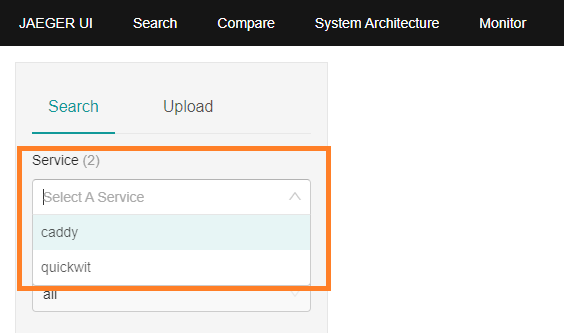



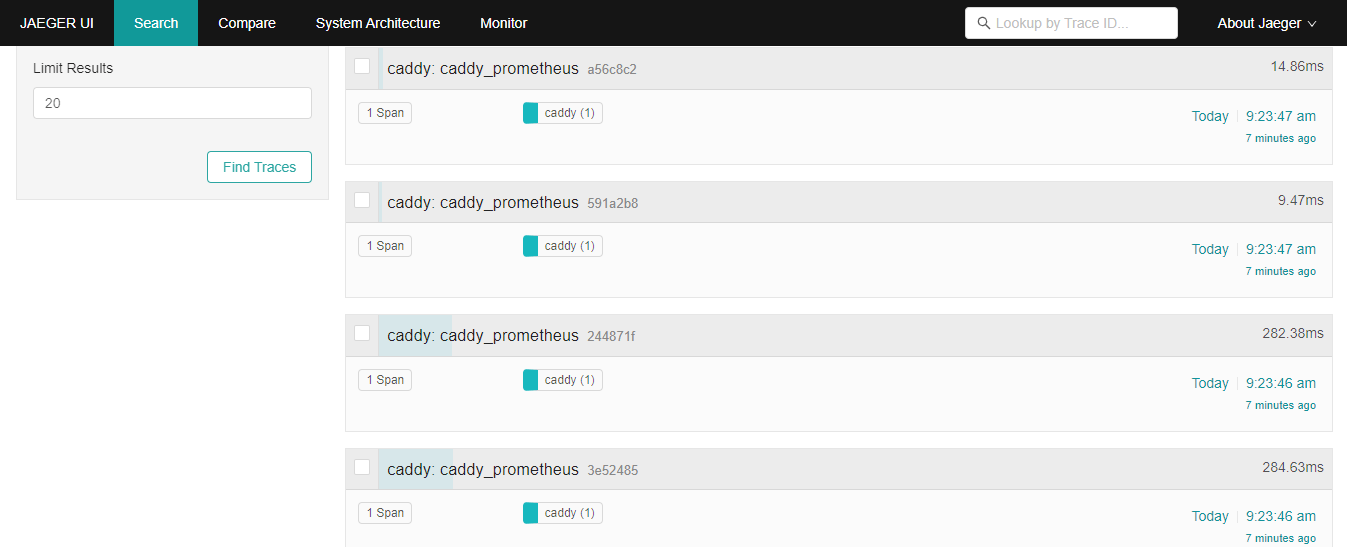
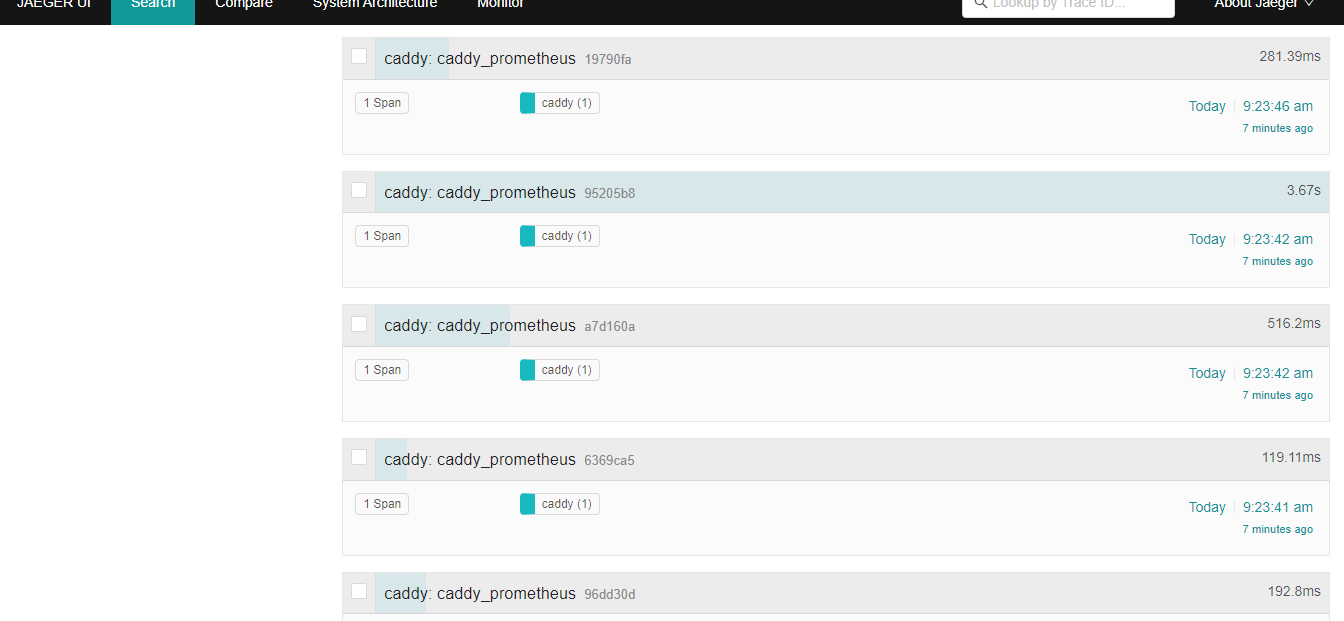

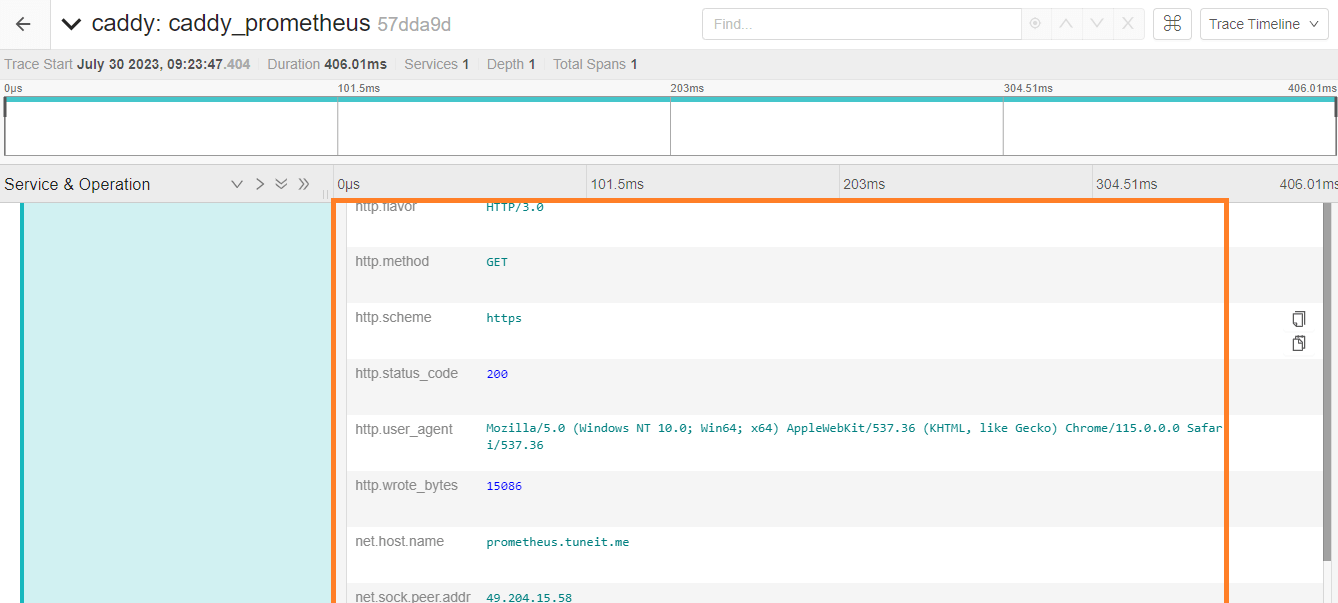

Please find below Grafana images for your reference.

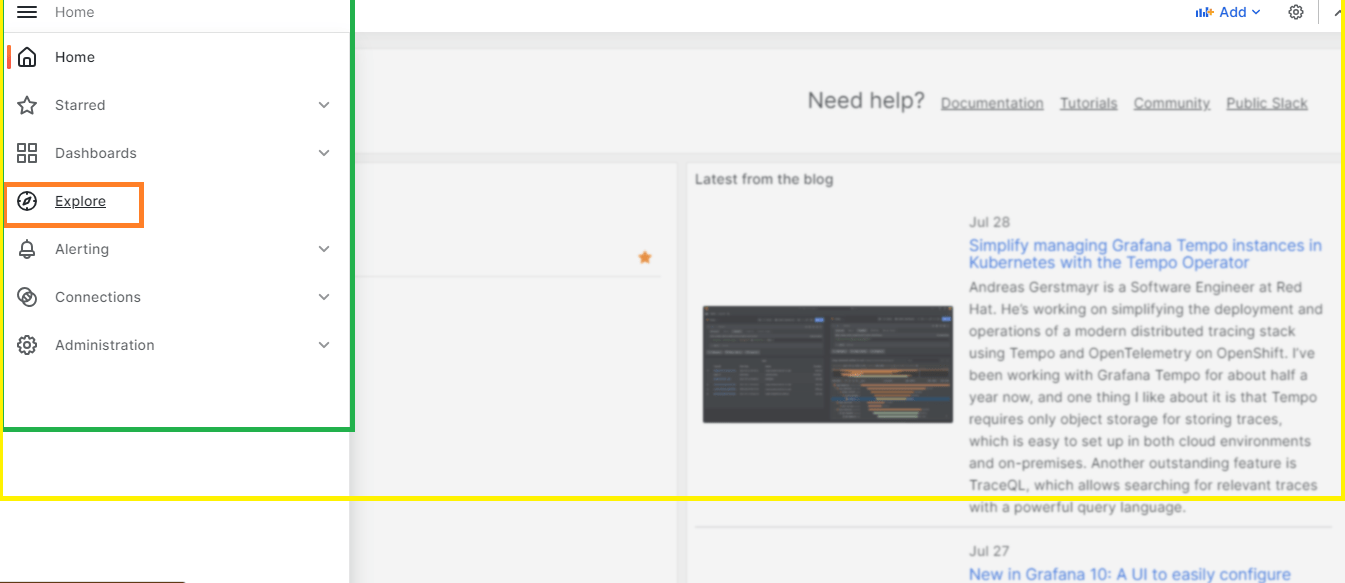
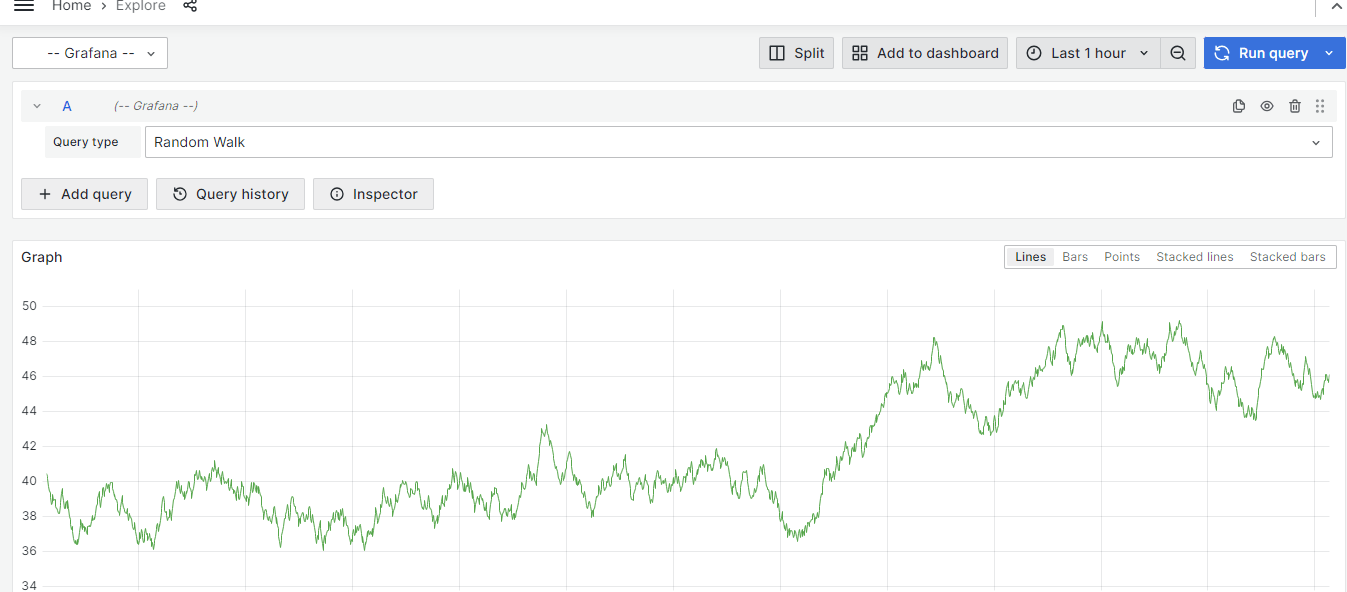
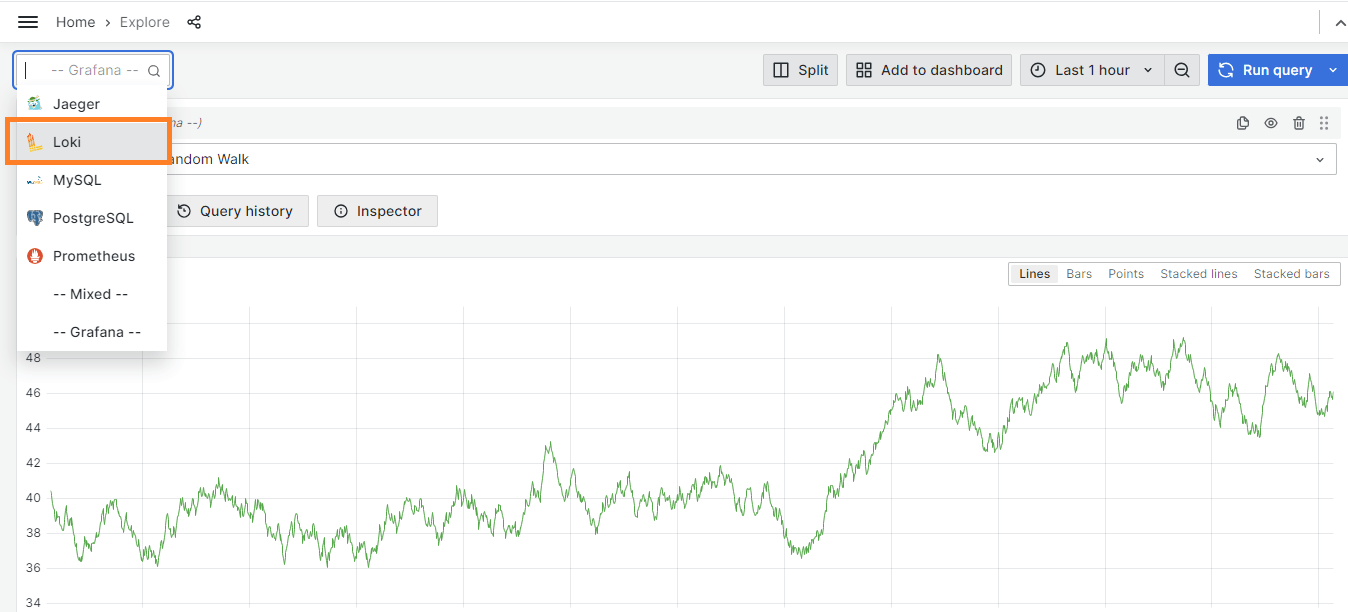

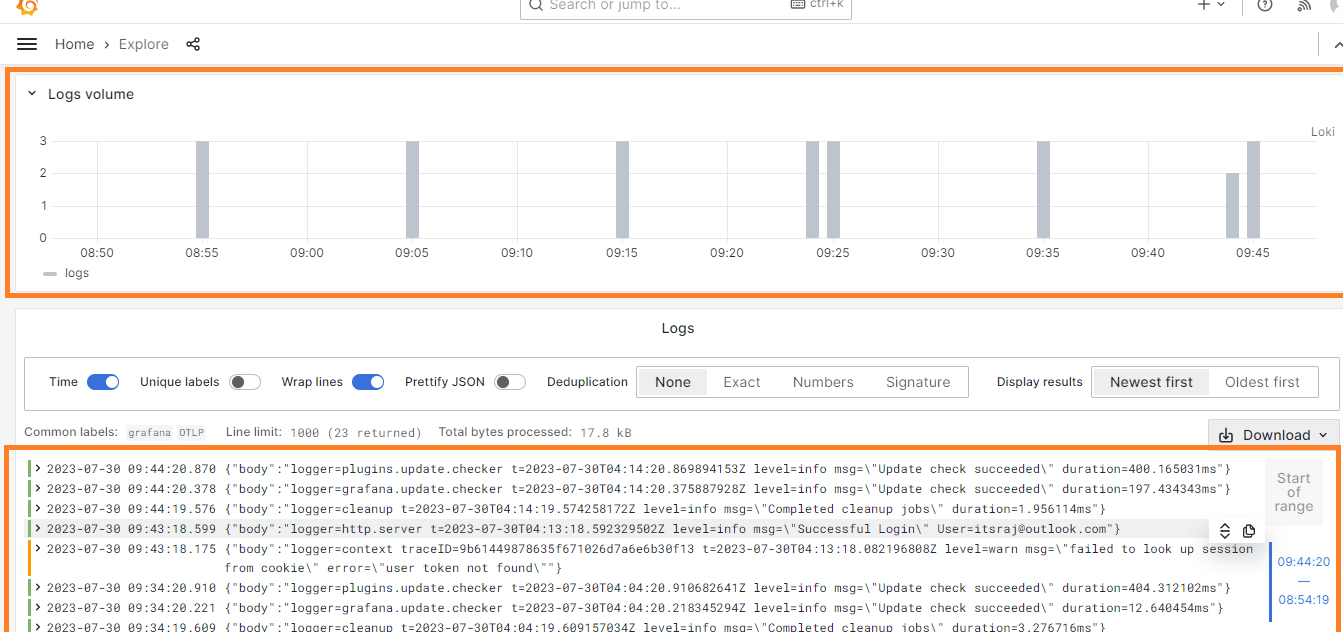
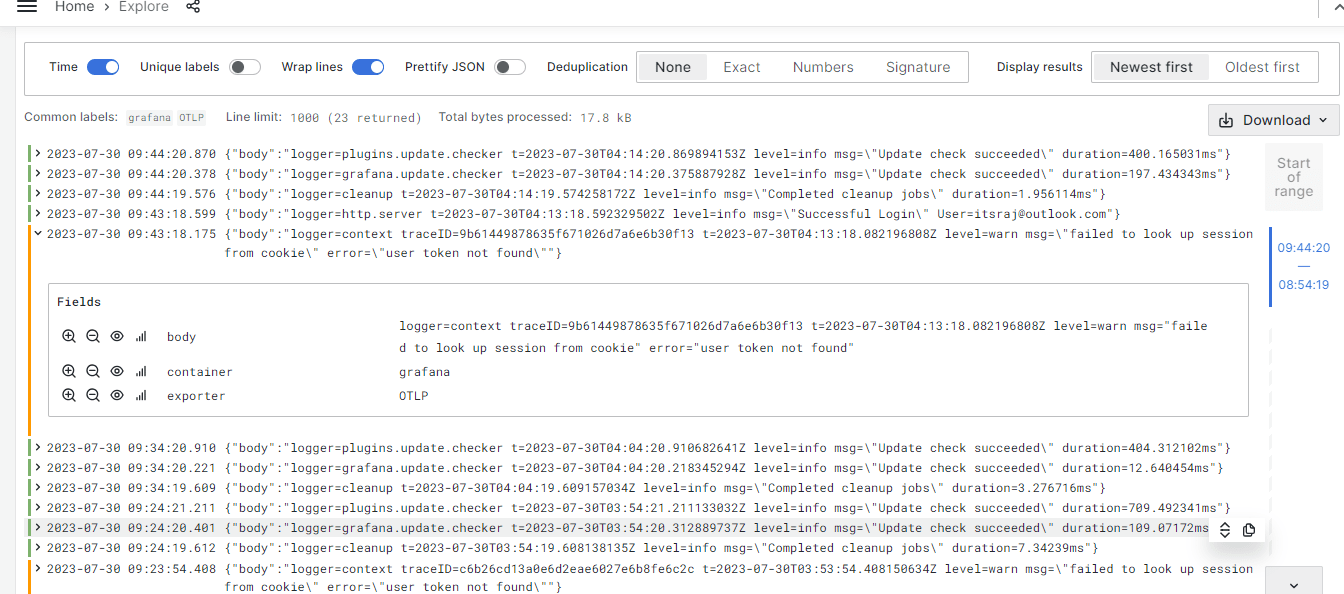
Please find below Prometheus images for your reference.
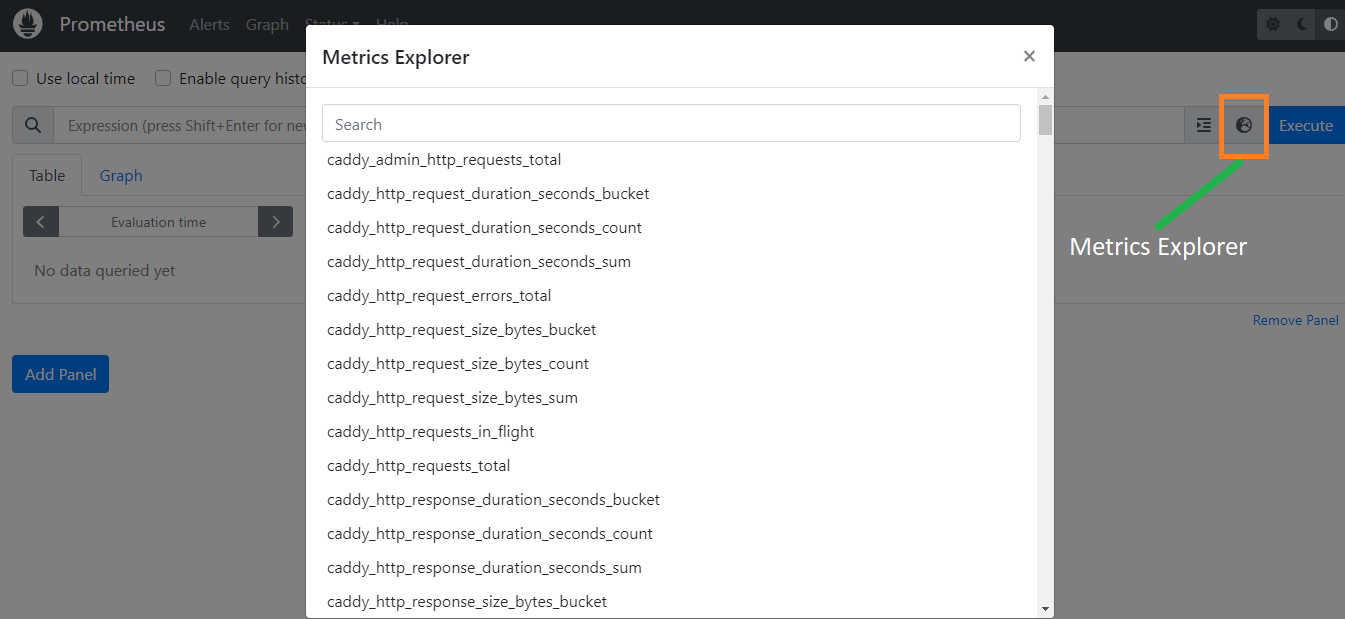

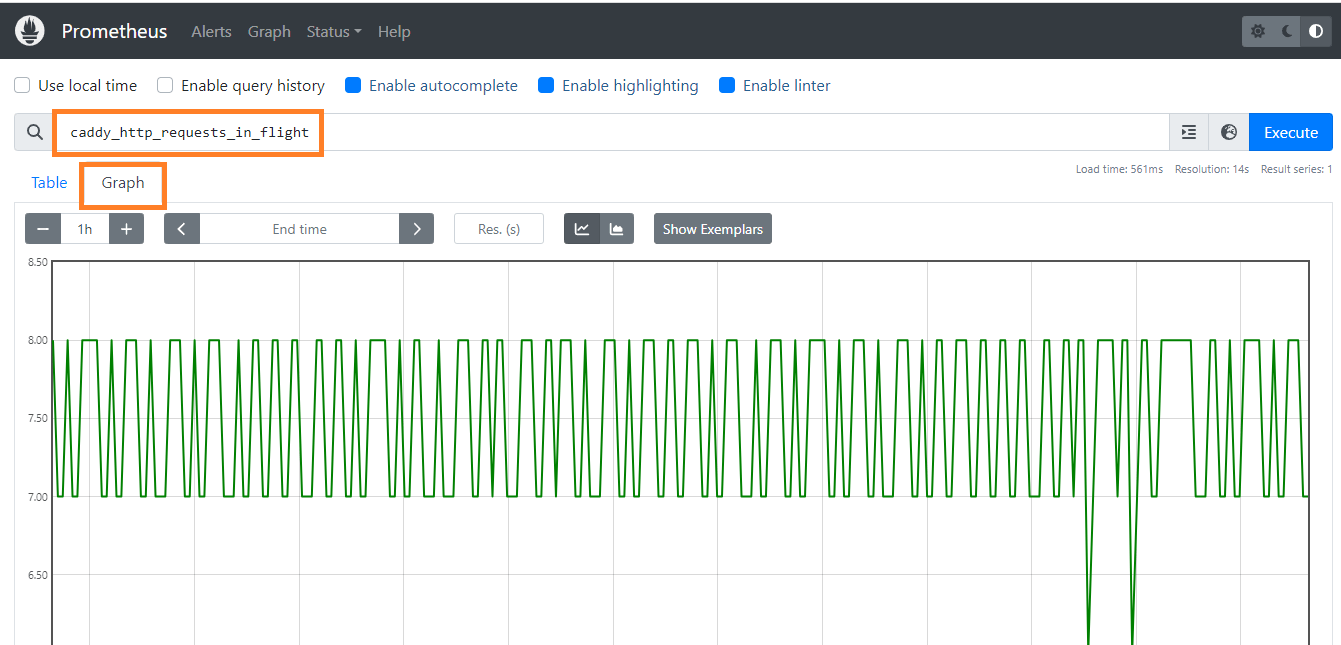
Hope you enjoyed this tutorial, please give your input/thought on it by commenting below. It would help me to bring more articles that focus on Open Source to self-host.
Stay tuned for other deployments in coming posts… 🙄
